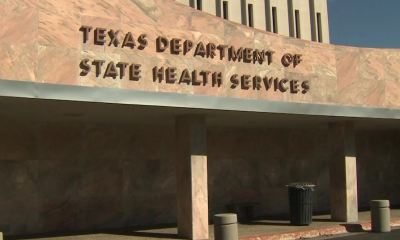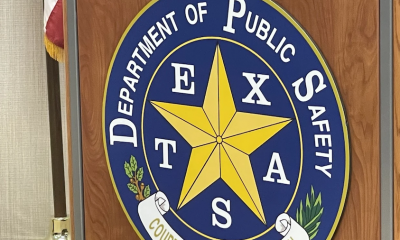Texas
Repairs underway on earthen levee damaged by border wall construction in South Texas
TX — When Democratic Texas Congressman Henry Cuellar and Hidalgo County Judge Richard Cortez decided on Tuesday to tour the South Texas border levees damaged by border wall construction, they had expected to be trashing the federal government for putting residents at risk while delaying repairs.
But to their surprise, they saw at least two construction crews busy at work fixing the four giant gaps that were made when the Trump administration ordered the border wall to cut through this region.
“This was pleasant news to all of us here today,” said Cuellar, who along with Cortez flew over the region in a DPS helicopter. “That’s a beautiful sound of bulldozers.”
That’s a beautiful sound of bulldozers.”
“Today is a good day,” Cortez said to a throng of media assembled in a remote and dusty area off a field where a road-sized gap in the 25-foot-tall earthen levee wall still remains.
Behind him, a generator gurgled and heavy equipment surrounded the area, the same spot where Cortez stood just two weeks ago pleading for the Department of Homeland Security to authorize work crews to return to the region to repair the levees before hurricane season begins on June 1. The levees, and Rio Grande Valley’s 1 million population, had been left in a vulnerable state after President Joe Biden halted border wall construction when he took office and construction crews evacuated the sites.
The prompt action came after Cortez on Friday morning announced he was taking matters into his own hands and would send Hidalgo County work crews onto the property, which is under federal jurisdiction, to fix the levees whether authorized to do so or not.
His actions drew high praise from local leaders, like Cuellar and U.S. Rep. Vicente Gonzalez, D-Texas, and McAllen Mayor Jim Darling.
And by Friday afternoon, DHS Secretary Alejandro Mayorkas announced he was sending in work crews to repair the levees.
On Tuesday, Cuellar said he spoke with Daniel Avila, acting commissioner for the U.S. International Boundary and Water Commission, which owns and maintains the levee system to prevent flooding by the Rio Grande. Avila said they would do all in the agency’s power to quickly put together an action plan for construction and emergencies, in case of flooding during repairs.
He also spoke on Tuesday with Shalanda Young, deputy director of the Office of Management and Budget, who had assured him the federal government would pay for the repairs.
But neither he nor Cortez said they had expected the reconstruction to begin so quickly, especially after U.S. Army Corps of Engineers Brig. Gen. Christopher Beck last week told them it would take up to four weeks to call in construction crews and six to nine months to complete repairs.
That was the “bureaucratic answer,” Cuellar said. “And we were not very happy.”
But after Cortez took a stand, federal officials appear to have been able to find a way to cut that timeline significantly.
Now they are expecting it to take two weeks to fill in the levee gaps. But more intricate and complicated work — especially areas where crews had “shaved the border wall” to fill in with concrete and steel bollards — will take longer, possibly five months, Cortez said.
That still puts the flood-prone delta region at risk. But in the meantime, Hidalgo County Emergency Management Coordinator Ricardo Saldaña said he has been in contact with state officials from Texas Division of Emergency Management, and National Guard and he has received assurances that if there were a catastrophic weather event that residents could be safely evacuated.
Cortez had told Border Report that if the breaches go unresolved then hundreds of thousands of residents, businesses and property are vulnerable and could be lost in case of severe weather.
Saldaña said Tuesday that if two regional dams were to completely fill and to begin releasing water, then this western section of Hidalgo County would have about a week to evacuate before waters reached downstream. He said they also are communicating with Mexican officials and keeping track of any significant rain events in northern Mexico that could also subject the Rio Grande Valley to flooding.
That gave Hidalgo County Commissioner Everardo “Ever” Villareal some relief because he says this area is “a poor area” and many of these border residents and farm owners don’t have proper insurance.
“This could have been an immediate danger to property and life,” Cortez said, smiling with relief. “This was a very good day.”










